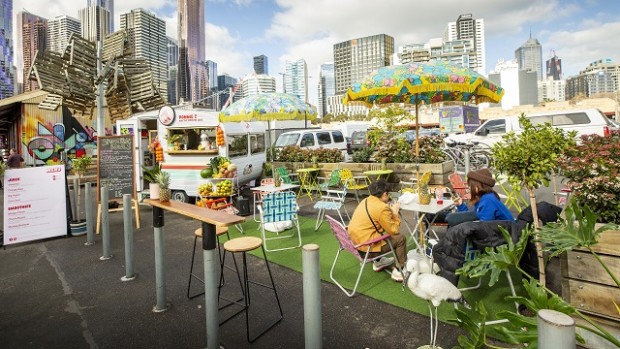“It seems like I’ve been here before, I can’t remember when, but I got this funny feelin’ that I’ll be back once again” wrote Harry Chapin in his 1972 classic song “All My Life’s A Circle”. He could have been talking about retail and how no matter how hard vested interests force us away from economic gravity, eventually the immutable laws bring the pendulum back to economically sustainable. Since Gruen conceptualised a (never actually realised) vision for the modern hyper-mall
in the late 1950’s, much of the retail development industry has been cynically trying to shut down vibrant, local community-tuned shopping strips in favour of bland, cookie cutter monsters.
From rezoning of street-scapes to the re-routing of traffic flows and the elimination of convenient parking, every trick in the book had been used in this competitive boxing ring to ensure high level investment had the odds stacked to deliver high returns.
Truth is there always has been and always will be a place for mega-malls well placed and well serviced to meet high-density catchment areas. But increasingly we are seeing the re-emergence of vibrant, successful, highly differentiated local shopping options that are celebrated by local communities and progressively legislators.
While much of this has to do with ‘cafe society’ and our seemingly endless thirst for eating and drinking options, the trend extends to services and other retail categories that best serve local shoppers everyday needs. Gruen’s original model was an attempt to put the European city centre under a climate-controlled roof. Logical and admirable, especially given his background. But in the suburbs – where most of Australia actually lives –the regular shopping trip is about local relevance.
When these local precincts are done well, the foot traffic is strong seven days a week through all day parts. Yes it has peaks and ebbs and flows, but it is solid all week long and this puts energy back into the local community. Councils are beginning to foster this movement with better traffic flows, lobbying for transport connections and better car parking facilities to add convenience and useability. But by far the biggest driver of relevance is casual dining and drinking options.
More and more we are seeing colourful streetscapes, courtyards, laneways and gardens creating a combination of covered and open-air spaces that human beings are drawn to. Smart, entrepreneurial developers are creating new local precincts that create returns from a combination of residential, commercial, hospitality, services and retail.
Life has always been shades of grey, not black and white and economic sustainability dictates what does and does not survive. The shopping precincts in trouble at the moment seem to be those that exist somewhere in the middle. Not big enough to win on width of offer and not intimate enough to be locally optimised, differentiated and vibrant.
Retail success demands attention to location, the company you keep, how differentiated your offer is and how well you execute. In this age of technological enablement, we are starting to return to a more interesting blend of options thanks in no small part to the power of consumers voting with their wallets. After all, it’s more than just a distribution model to shoppers.
Peter James Ryan is chief executive navigator at Red Communication Australia, and has 25 years of marketing and business experience.

